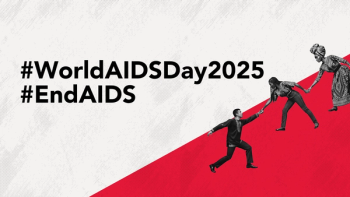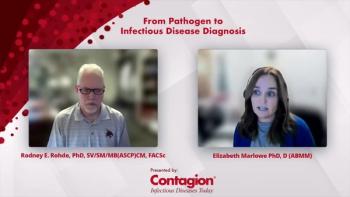
Preventing Opportunistic Infections in HIV
Transcript (slightly modified for clarity)
Peter L. Salgo, MD: Let’s go back to history again. For all of my patients with HIV early on, we treated them with prophylactic antibiotics—whether it was with Bactrim or something—because we knew somewhere down the line they were going to catch something bad. But now you’re telling me that you can control the HIV really well. So where do we stand on prophylaxis? What do you use as an indicator? Is it the viral count? Is it the CD4 count? Where do you go with that?
Ian Frank, MD: It’s basically the CD4 count, but I think we use far less prophylaxis than we used to. I think the only disease I prophylax is pneumocystis in a naïve patient.
Joseph Eron, MD: But it’s tough to teach the residents that. It’s so hard.
Peter L. Salgo, MD: Why is it so hard?
Paul E. Sax, MD: They love azithromycin.
Joseph Eron, MD: Right. Don’t mess up their lives. Get them on antiretroviral therapy.
Ian Frank, MD: It’s just a holdover. People look at these ancient recommendations that haven’t really been effectively updated, I think.
Paul E. Sax, MD: They can’t be. They get the studies that were done. For example, consider mycobacterium avium complex.
Ian Frank, MD: No, they can be. They can be updated.
Paul E. Sax, MD: That study would have to be gigantic. Who’s going to fund it?
Joseph Eron, MD: But the point is that the guidelines are changing. The guidelines do say, for example, for MAI (mycobacterium avium-intracellulare) prophylaxis, you should start them on antiretroviral therapy. But you don’t necessarily need to start.
Paul E. Sax, MD: That’s what one set of guidelines says.
Joseph Eron, MD: One set of guidelines.
Peter L. Salgo, MD: Okay. Well, that takes care of mycobacteria.
Eric S. Daar, MD: But not everybody that is taking care of patients and you tell them to start their antiretrovirals does so. In fact, often the people who get admitted to the hospital are not just newly diagnosed. They’re the people who leave and don’t start antiretrovirals.
Ian Frank, MD: But if those people are not taking their antiretrovirals, they are not going to be taking their MAC (mycobacterium avium complex) prophylaxis.
Peter L. Salgo, MD: I’m getting a headache.
Ian Frank, MD: It’s really HIV therapy. The important thing for providers to understand is that when viral replication is under control, it doesn’t matter what the CD4 count is. It can be 50, it can be 10.
Peter L. Salgo, MD: Are you telling me that somebody whose CD4 count is low and whose viral count is low is not at risk for mycobacterium avium?
Joseph Eron, MD: Certainly, the risk is dramatically reduced if people are suppressed, even if their CD4 remains low. However, if you look across a large population, they do have higher risk of opportunistic infections.
Peter L. Salgo, MD: Compared to all-comers?
Joseph Eron, MD: Compared to all-comers with HIV. But I do agree with Ian. It really is probably pneumocystis prophylaxis that I wouldn’t shed.
Paul E. Sax, MD: And TB for skin test positive.
Peter L. Salgo, MD: For skin test positive, that is people who have been exposed?
Paul E. Sax, MD: Or interferon gamma.
Peter L. Salgo, MD: If somebody is on effective antiretroviral therapy, their virus count is low, and their CD4 count is okay, would you or would you not prophylax for pneumocystis? We’re 50/50?
Joseph Eron, MD: If it’s pneumocystis.
Paul E. Sax, MD: If they are between 100 and 200, I don’t prophylax.
Eric S. Daar, MD: Right, I agree.
Joseph Eron, MD: Even when you’re starting?
Paul E. Sax, MD: Yes. In someone who has poor immune recovery, whose CD4 is between 100 and 200, and whose viral load is suppressed, I do not give them pneumocystis prophylaxis.
Eric S. Daar, MD: And that’s consistent with the guidelines?
Ian Frank, MD: It’s the recommendations. If their CD4 count is greater than 100 and they’re virologically suppressed, they don’t need to be prophylaxed. It’s also important for folks to understand that really, the situation that I was mentioning before almost doesn’t exist. When you’ve got viral replication control, the CD4 count is not going to be 10. And on these new drugs, CD4 counts often rise 100 cells during the first month of therapy. So they rapidly get their CD4 count above a threshold that we’ve traditionally associated with being at risk for these opportunistic infections.
Peter L. Salgo, MD: Okay. And just to be clear, again, somebody is on effective (however you want to define that) ART therapy?
Joseph Eron, MD: We know how to define it—viral load below the limit of detection. That’s actually not an argument. You won’t get an argument there.
Peter L. Salgo, MD: Okay. Viral load below the limit of detection. Are you prophylaxing for mycobacterium avium complex?
Joseph Eron, MD: No
Peter L. Salgo, MD: Fine. We got a definitive answer.
Paul E. Sax, MD: CDC guidelines still include it. And although the data are old that support using the prophylaxis, they’re never going to do the study to show that it’s not necessary. So we’ve just left it in there. But that’s kind of lazy, because the studies were all done in the early 1990s, and that’s not the current era that we’re in for ART.
Joseph Eron, MD: But to clarify, on the other hand, if someone comes in and their CD4 is 50…
Paul E. Sax, MD: I do start pneumocystis prophylaxis.
Joseph Eron, MD: …and you start them on ART, I do give them pneumocystis prophylaxis until they get above 100, consistently.
Paul E. Sax, MD: Yes, me too.
Joseph Eron, MD: I think we agree on that.
Eric S. Daar, MD: I agree.
Newsletter
Stay ahead of emerging infectious disease threats with expert insights and breaking research. Subscribe now to get updates delivered straight to your inbox.

















































































































































































































































































